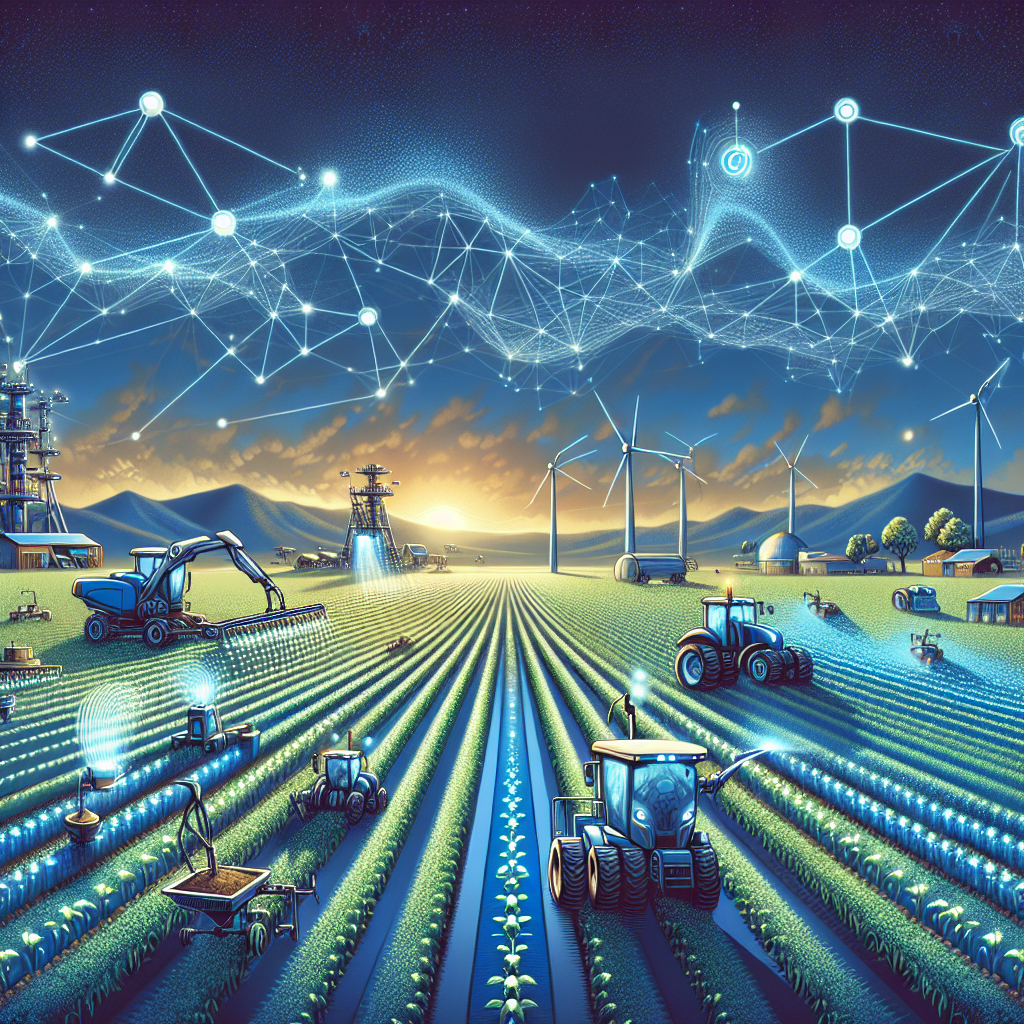Artificial intelligence (AI) is revolutionizing various industries, and agriculture is no exception. With the world’s population expected to reach 9.7 billion by 2050, the demand for food is only going to increase. AI-driven solutions hold great potential to help farmers increase productivity, reduce waste, and make more informed decisions. In this article, we will explore the various ways in which AI is being used in agriculture and the benefits it can bring to the industry.
One of the key areas where AI is making a significant impact in agriculture is in precision farming. Precision farming involves using data-driven insights to optimize farming practices and maximize crop yields. AI-powered tools can analyze data from various sources such as satellite imagery, drones, weather forecasts, and soil sensors to provide farmers with real-time information on crop health, soil moisture levels, pest infestations, and more. This allows farmers to make data-driven decisions on when to plant, fertilize, irrigate, and harvest, leading to increased efficiency and productivity.
AI is also being used in crop monitoring and disease detection. By analyzing images of crops taken from drones or satellites, AI algorithms can detect early signs of disease, nutrient deficiencies, and pest infestations. This allows farmers to take timely action to prevent crop losses and improve crop health. In addition, AI can also help farmers optimize the use of pesticides and fertilizers by identifying areas that require treatment, reducing the overall environmental impact of farming practices.
Another area where AI is making a significant impact is in livestock farming. AI-powered tools can monitor the health and behavior of livestock, detect signs of illness or distress, and optimize feeding schedules to improve animal welfare and productivity. In dairy farming, AI can analyze data from sensors attached to cows to predict when they are most fertile, optimize milking schedules, and monitor milk quality. This leads to higher milk yields, better reproductive outcomes, and improved overall profitability for farmers.
AI is also being used in the development of autonomous farming equipment. Self-driving tractors, drones, and robots equipped with AI algorithms can perform tasks such as planting, weeding, spraying, and harvesting with great precision and efficiency. This not only reduces the labor costs associated with farming but also minimizes the risk of human error and increases the overall productivity of farms.
In addition to improving productivity and efficiency, AI-driven solutions in agriculture can also help farmers mitigate the impacts of climate change. By analyzing historical weather data and predicting future climate patterns, AI algorithms can help farmers adapt their farming practices to changing weather conditions, such as droughts, floods, and extreme temperatures. This can help farmers reduce crop losses, optimize water usage, and improve overall resilience to climate-related risks.
Despite the numerous benefits of AI-driven solutions in agriculture, there are also challenges that need to be addressed. One of the key challenges is the lack of access to AI technology for small-scale farmers in developing countries. Many farmers in these regions do not have the resources or technical expertise to adopt AI-powered tools, limiting their ability to benefit from the technology. Governments, NGOs, and private companies need to work together to provide training, support, and access to affordable AI solutions for small-scale farmers to ensure that they can also benefit from the technology.
Another challenge is the issue of data privacy and security. AI algorithms require large amounts of data to train and improve their performance, raising concerns about the privacy of farmers’ data. It is important for companies developing AI solutions to implement robust data protection measures and ensure that farmers have control over how their data is used and shared. Farmers should also be educated about the importance of data security and privacy to build trust in AI technology.
In conclusion, AI-driven solutions have the potential to revolutionize the agriculture industry by increasing productivity, reducing waste, and improving sustainability. By leveraging AI technology, farmers can make more informed decisions, optimize farming practices, and adapt to changing environmental conditions. However, to fully realize the benefits of AI in agriculture, it is important to address challenges such as access to technology, data privacy, and security. With the right support and collaboration, AI-driven solutions can help farmers feed a growing population while protecting the environment and improving livelihoods.
FAQs:
Q: How can AI help farmers increase productivity?
A: AI can help farmers increase productivity by providing real-time insights on crop health, soil moisture levels, pest infestations, and more. This allows farmers to make data-driven decisions on when to plant, fertilize, irrigate, and harvest, leading to increased efficiency and productivity.
Q: What are some of the challenges of adopting AI in agriculture?
A: Some of the challenges of adopting AI in agriculture include the lack of access to technology for small-scale farmers in developing countries, data privacy and security concerns, and the need for training and support to ensure that farmers can effectively use AI-powered tools.
Q: How can AI help farmers mitigate the impacts of climate change?
A: AI can help farmers adapt their farming practices to changing weather conditions, such as droughts, floods, and extreme temperatures, by analyzing historical weather data and predicting future climate patterns. This can help farmers reduce crop losses, optimize water usage, and improve overall resilience to climate-related risks.

